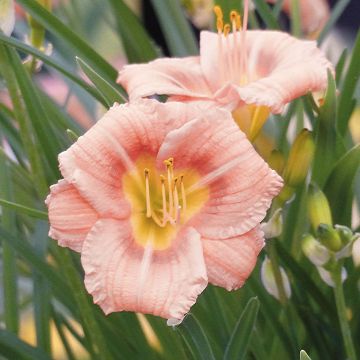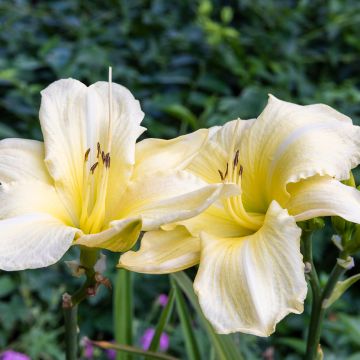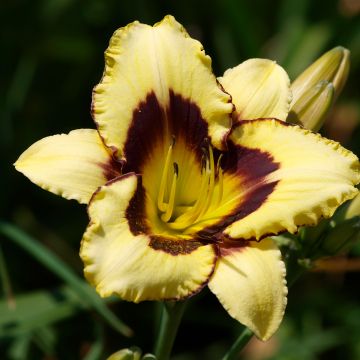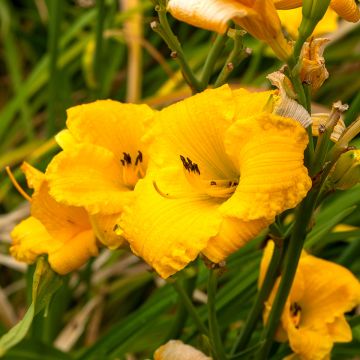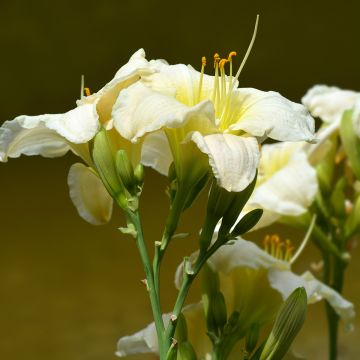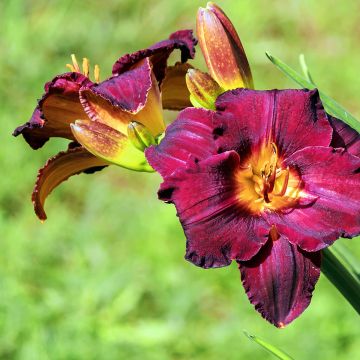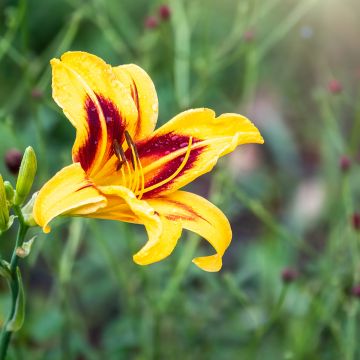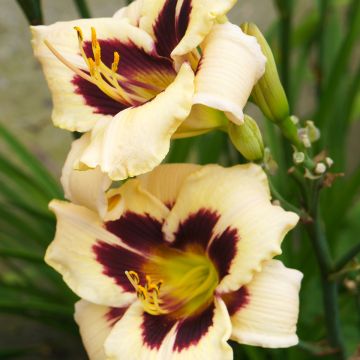
Daylilies: how to plant them
All our tips for successfully planting them in the garden
Contents
Daylilies (Hemerocallis), often referred to as “Lily of the Day”, are highly valued perennials for their abundant colourful flowering. They produce numerous flowers in warm tones, ephemeral (lasting only one day), but they renew throughout the summer. Hardy and easy to care for, they require little maintenance and easily find their place in the garden. They are ideal for enlivening borders, beds, or even terraces and balconies, when grown in a large pot or container. Discover all our tips for successfully planting and maintaining daylilies!
Where to plant daylilies?
Daylilies are robust and easy-to-maintain perennials, native to the temperate regions of the Far East. They adapt well to gardens in temperate climates and are capable of withstanding varied conditions. Generally, they prefer a sunny to partially shaded exposure, as 4 to 6 hours of sunlight per day is sufficient for them to produce abundant and colourful flowering. Ideally, their exposure should be adjusted according to your climate: in the hot and dry regions of southern France, favour a slightly shaded location to protect daylilies from intense sunlight and drying out, especially in summer. In cooler regions, choose a sunny spot to maximise their exposure to light, as too much shade could reduce flowering.
These plants appreciate deep, fertile, slightly moist, and well-drained soil. Finally, avoid very windy areas, as this can dry out the leaves and limit the plant’s growth. A good mulch at the base of the daylilies can also help keep the soil cool and maintain moisture, especially during periods of intense heat.
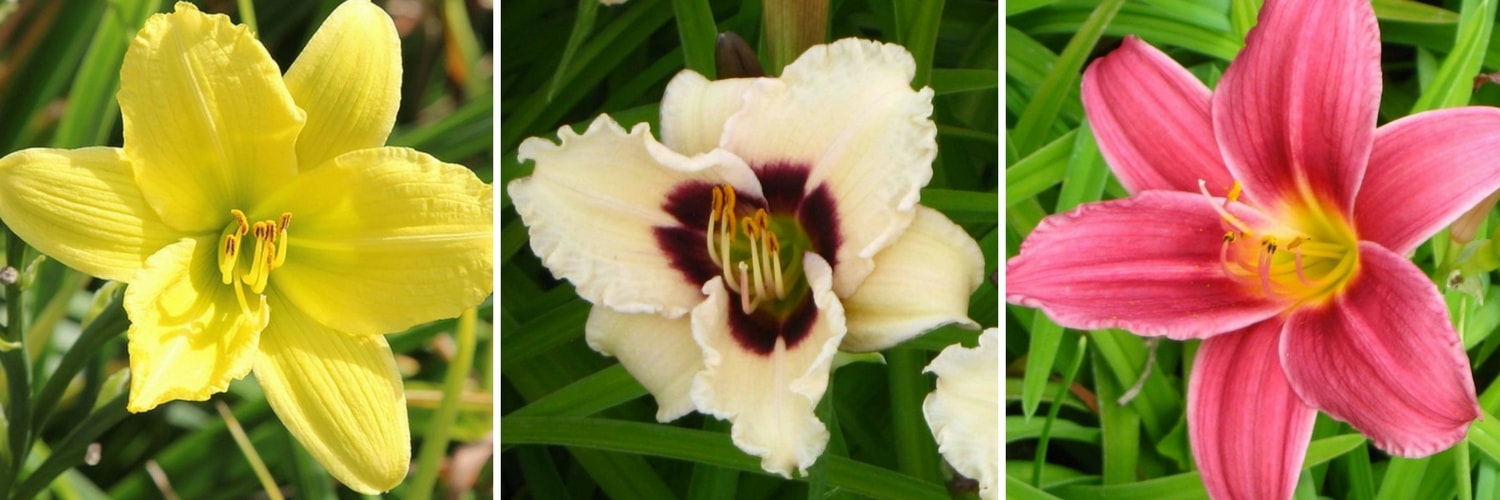
Daylilies Green Flutter – Snowy Eyes – Baby Betsy
When to plant daylilies?
Planting daylilies can be done almost all year round, although it is best to avoid periods of intense frost and extreme heat. The best time to plant them is in autumn (from September to November), as this allows them to develop a solid root system before winter. Autumn planting ensures a more vigorous recovery in spring and abundant flowering from the start of the season. It is also possible to plant them in spring, in April-May, once the soil has warmed up. This period is particularly suitable in regions with harsh winters, as it protects young plants from frost damage.
Discover other Hemerocallis - Daylilies
View all →Available in 3 sizes
Available in 1 sizes
Available in 3 sizes
Available in 1 sizes
Available in 2 sizes
Available in 2 sizes
Available in 3 sizes
Available in 2 sizes
Available in 1 sizes
Available in 2 sizes
How to plant daylilies?
- Start by preparing the soil: weed and work it deeply to loosen it and ensure good aeration for the roots. You can add some well-matured compost to enrich the soil.
- Dig a wide hole with a shovel or a dibber, about 20 to 30 cm deep and wide, so that the roots can spread well.
- Install the young plant so that the collar (the junction between the stem and the roots) is about 3 cm below the soil surface. This allows the plant to remain well anchored and protected from temperature fluctuations.
- Respect the spacing between the plants: allow about 25 cm of distance for dwarf varieties and up to 50 cm for larger varieties, to let each plant develop freely without competition for space and nutrients.
- Backfill the hole with the original soil, which you can lighten with some potting soil if your soil is particularly heavy or clayey, to ensure good drainage. Firm it lightly without compacting to avoid blocking oxygen around the roots.
- Water generously after planting to ensure good moisture and encourage root establishment.
- Mulch the base of the plants with a layer of organic mulch (such as wood chips or straw) to retain moisture, protect the soil from weeds, and prevent temperature fluctuations.

How to care for them?
Caring for daylilies is quite simple, but a few regular actions will help keep them in good shape and ensure abundant flowering:
In spring, watch for the emergence of young shoots, which can be targeted by slugs and snails. If necessary, place natural barriers (such as crushed eggshells) around the young plants or use eco-friendly solutions to deter them. Feel free to consult our advice sheet: “Slugs: 7 ways to fight effectively and naturally”
If the weather is dry, water your daylilies once or twice a week in spring, ensuring that the soil remains slightly moist, especially until the first flower buds appear. Once the flowers are formed, you can space out the watering, as daylilies are relatively drought-tolerant.
In summer, after flowering (around August), it is possible to cut back the foliage by trimming the stems and leaves down to the ground with a pruning shear. This pruning encourages the emergence of new, fresher, and denser foliage, which will enhance the garden in late summer and autumn.
In autumn, consider dividing the clumps if they become too large, generally every 4 to 5 years. Dividing helps rejuvenate the plants and prevents them from competing for nutrients. To divide, dig up the clump, separate the roots, and replant the new sections in enriched and well-prepared soil.
→ Also read: How to divide daylilies?
- Subscribe!
- Contents































